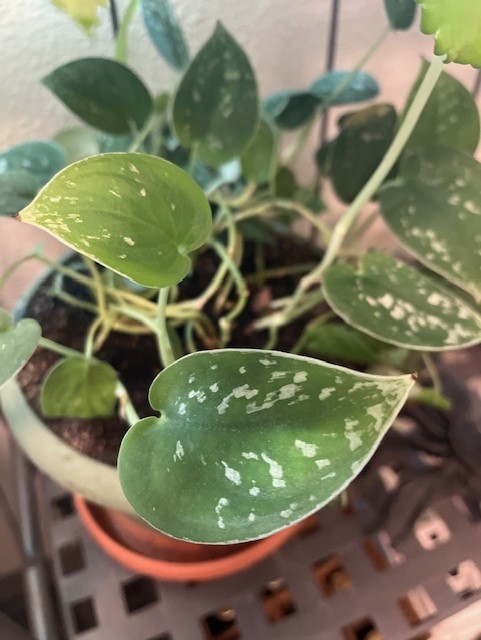- Author: Denise Godbout-Avant
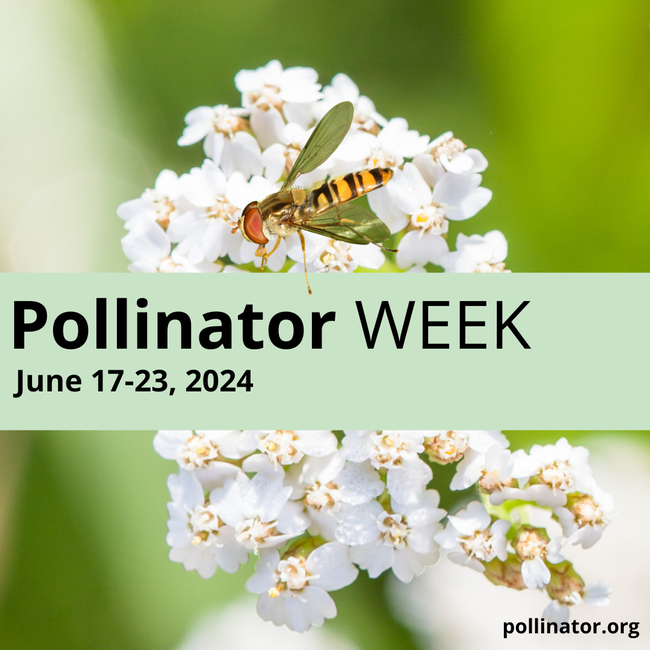
Pollinators receive food in the form of nectar (source of sugar) or pollen (source of protein, fat, and other nutrients). In the process of moving from flower to flower to feed, pollinators disperse pollen grains among plants of the same species, enabling the plants to reproduce. Flowers have evolved over long periods of time into many colors, shapes and scents to attract their pollinators, thus creating a mutually beneficial relationship.
The Pollinators
While bees are the primary pollinators, other insects including butterflies, moths, flies, beetles, wasps, some birds such as hummingbirds, and bats also play important roles.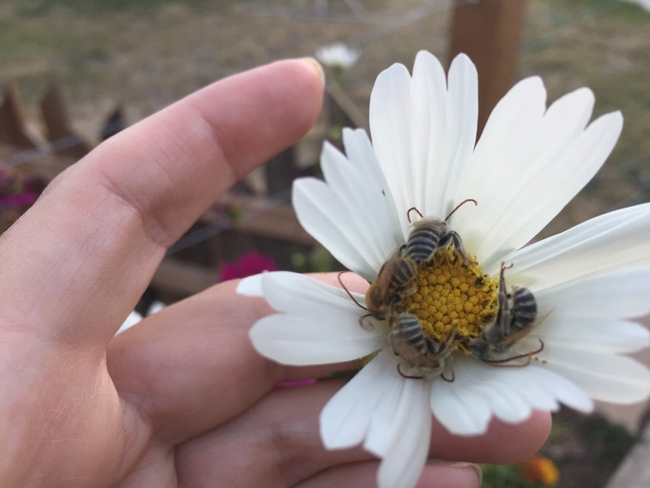
Honeybees & Native Bees
Honeybees (genus Apis) are the bees we are most familiar with. However, honeybees are just one species of a very diverse group with over 20,000 species worldwide, 4,000 species in the USA and 1,600 in California. Native bees come in a variety of shapes, colors, sizes and lifestyles that make them very efficient pollinators. Unlike honeybees and bumblebees, which are social bees living in colonies, native bees are solitary with 70 percent nesting in the ground with the rest nesting in wood and plant stems.
Butterflies
Butterflies are daytime flying insects who often have gorgeous colorful wings. Their larvae sometimes require a specific plant to feed on, though most adults will get their nectar from many plants.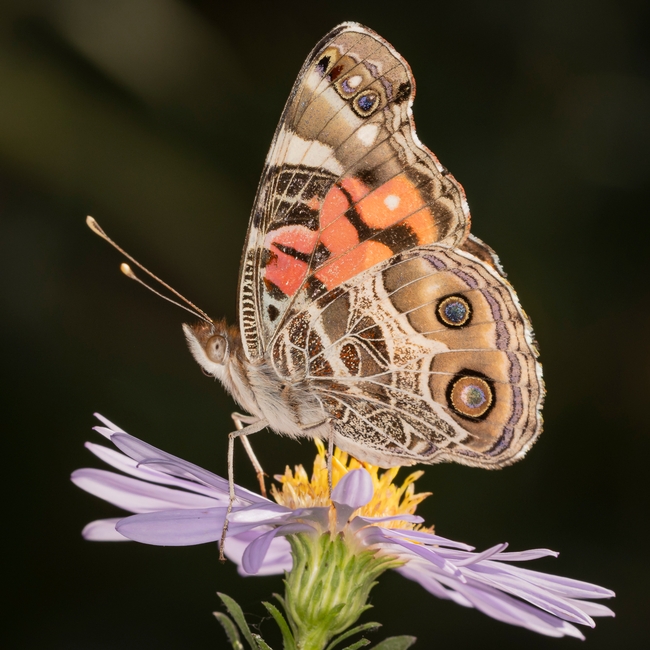
Moths
Moths are mostly evening and nighttime fliers, though some are out in the late afternoon or early morning. They are attracted to sweet-smelling flowers. Less colorful than butterflies, they are easily differentiated from butterflies by their “feathery” antennae.
Flies
Flies are not generally thought of as pollinators, however many are, particularly hover flies (family Syrphidae) and bee flies (family Bombyliidae), both of which are generalist pollinators. Generalist pollinators visit a wide range of plants, making them important inhabitants of gardens and fields.
Beetles
Beetles are a large group, with up to 28,000 species in the USA. Most beetles are not pollinators, but some do visit flowers for nectar or pollen and help fertilize some flowering plants, particularly magnolias.
Wasps
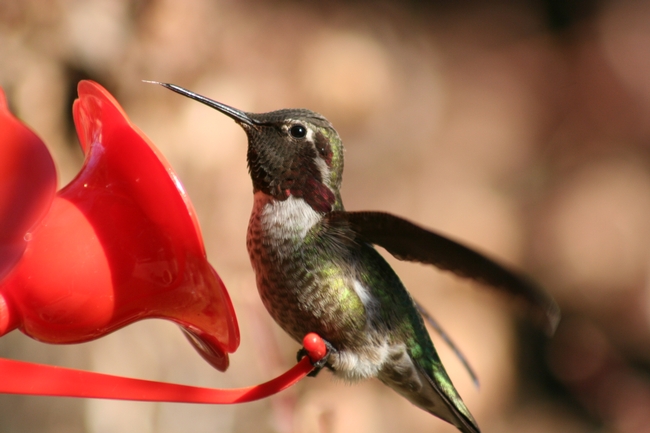
Hummingbirds
Hummingbirds are the most prominent pollinating birds in the Americas. With their long beaks, they can reach deep into flowers while sipping nectar. In addition to nectar, they also forage on insects and spiders.
Bats
Bats are nocturnal pollinators that play an important role in pollinating cacti and agave, as well as many tropical and subtropical plants including bananas, avocados, century plants and cashews. Species such as Mexican long-nose bat (Leptonycteris nivalis) have evolved heads and long tongues to access light-colored flowers which open at night, often producing abundant nectar and pollen.
How You Can Help Pollinators
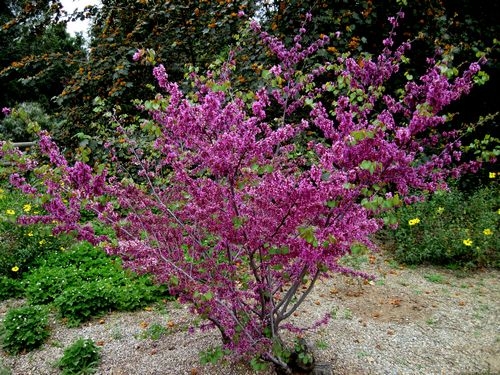
Pollinators need a diversity of flowers with lots of nectar and pollen. They require easy access to flowers blooming throughout the seasons, particularly during late winter, early spring, and late autumn seasons when fewer flowers bloom. Different flower species provide differing amounts of nectar. Native plants generally provide more nutritious nectar for pollinators, so they attract more pollinators. Download the Xerces Society Recommended Plants for the Central Valley Region for a list of plants.
To help protect pollinators, if you choose to use a pesticide, select one that are less toxic, such as an insecticidal soap or oil. Avoid broad-spectrum sprays that kill numerous insects. Spray on non-windy days in the early morning or late evening when pollinators are not present. Use UC Integrated Pest Management for information on pests and pest management (https://ipm.ucanr.edu/).
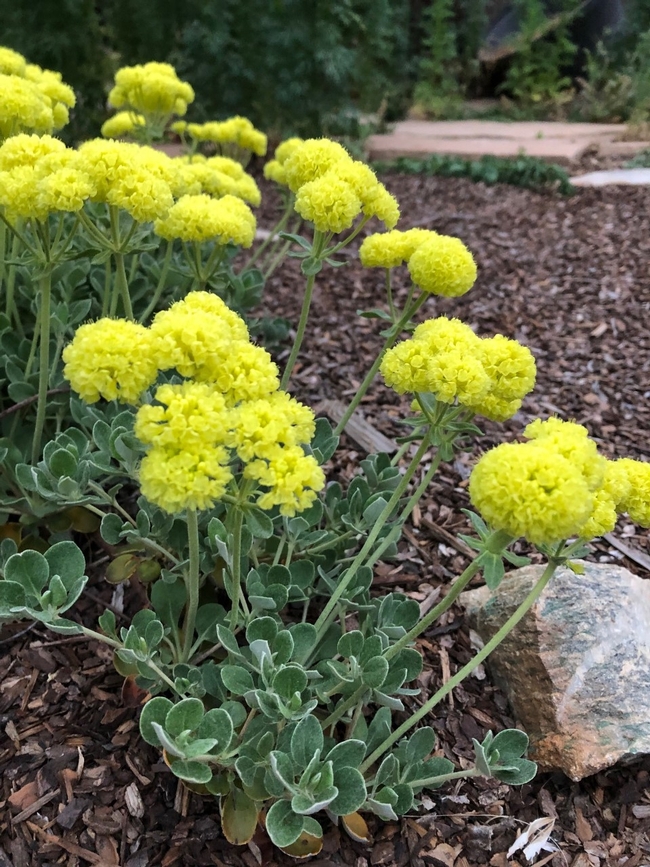
Citations
- The Pollinator Partnership https://www.pollinator.org/
- Xerces Society book: Attracting Native Pollinators: https://xerces.org/publications/books/attracting-native-pollinators
- California Native Plant Society (CNPS) native planting guides: https://www.cnps.org/gardening/choosing-your-plants/native-planting-guides
Free Resources from University of California and your local UC Master Gardeners
- CA Friendly Friendly Garden Recipes https://anrcatalog.ucanr.edu/Details.aspx?itemNo=8518
- How to Attract and Maintain Pollinators in your Garden https://anrcatalog.ucanr.edu/Details.aspx?itemNo=8498
- UC Stanislaus County Master Gardener: Butterflies in Your Garden with list of plants that attract butterflies: https://ucanr.edu/sites/CEStanislausCo/files/345791.pdf
- Gardening for Pollinators and Diversity from UC Davis Arboretum: https://arboretum.ucdavis.edu/pollinator-gardening
- Bees in the Neighborhood: best practices for urban gardeners. https://anrcatalog.ucanr.edu/Details.aspx?itemNo=8596
Books and ID Cards for Purchase
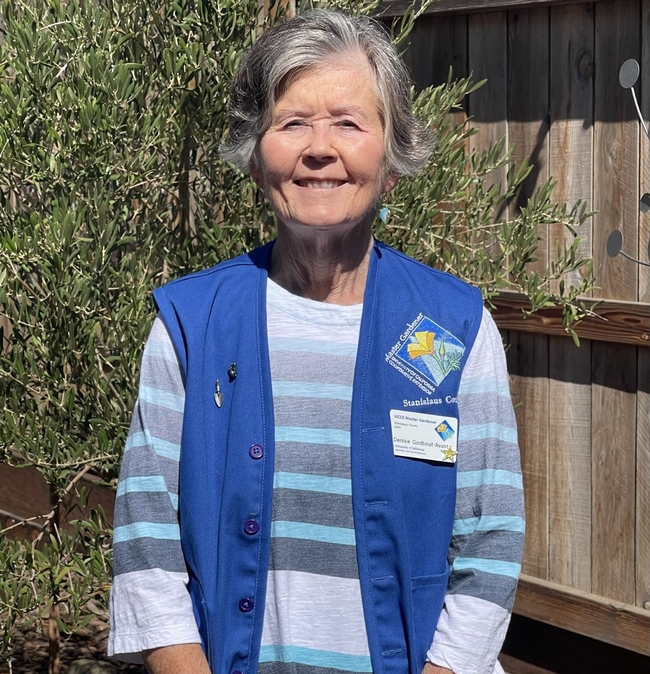
Common Plants to Attract California Native Bees https://anrcatalog.ucanr.edu/Details.aspx?itemNo=3557
Want both cards? Bundle and save $10 at https://anrcatalog.ucanr.edu/Details.aspx?itemNo=3557BUN
Denise Godbout-Avant has been a UC Cooperative Extension Master Garden in Stanislaus County since 2020.
- Author: Anne Schellman
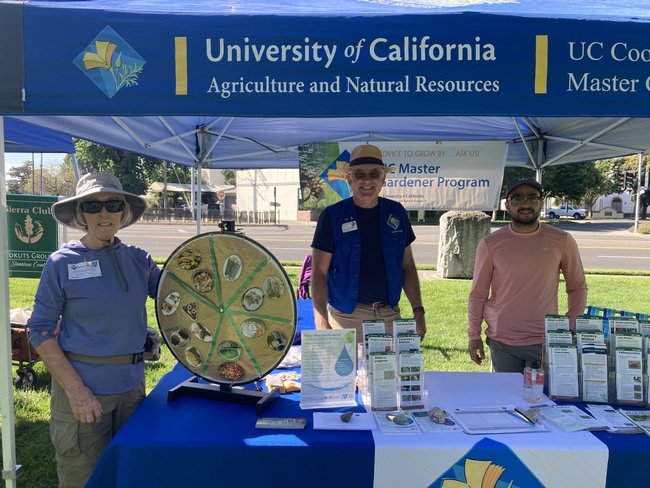
Called or visited the Stanislaus County UC Cooperative Extension Master Gardener Help Line and gotten information on what to do about a pest or gardening problem.
Learned something new from a class at a Garden Club, local Stanislaus County Library, Workshop at the Ag Center, or one of our online classes from our YouTube Channel.
Attended an event such as the Stanislaus County Fair, A Wellness Fair for county employees, the Pollinator Garden Event, Earth Day, or a Farmers Market booth and spoken with a Master Gardener.
Read our newsletter, The Stanislaus Sprout and gained helpful gardening and pest management information.
Are a current Master Gardener and would like to give to support the program.

All funds go DIRECTLY to our program.
Prize Challenge Awards
Online gifts made between noon on May 19 and 11:59 a.m. on May 20 may help programs qualify for prize challenge awards! Donations can be made at http://donate.ucanr.edu/givingday.
Checks Accepted
If you prefer sending a check instead of donating online, please make checks payable to “UC Regents” and specify “Stanislaus County Master Gardener Program” in the check memo. Then mail or drop off to our office: UC Master Gardeners, 3800 Cornucopia Way, Ste A, Modesto, CA 95358.
Your Support
Donations directly benefit the program to help provide scholarships to volunteers that want to enroll in our training program and people who can't afford our workshops. They also help replace computers, create prize wheels for fairs, purchase seeds to give away at events, and pay for other materials needed for outreach and education. We thank you for your support!
Anne and the Classes of 2019, 2020, 2022, and soon-to-be 2024 UC Cooperative Extension Master Gardeners of Stanislaus County.
Anne Schellman has been the coordinator for the program since 2018.
- Author: Denise Godbout-Avant
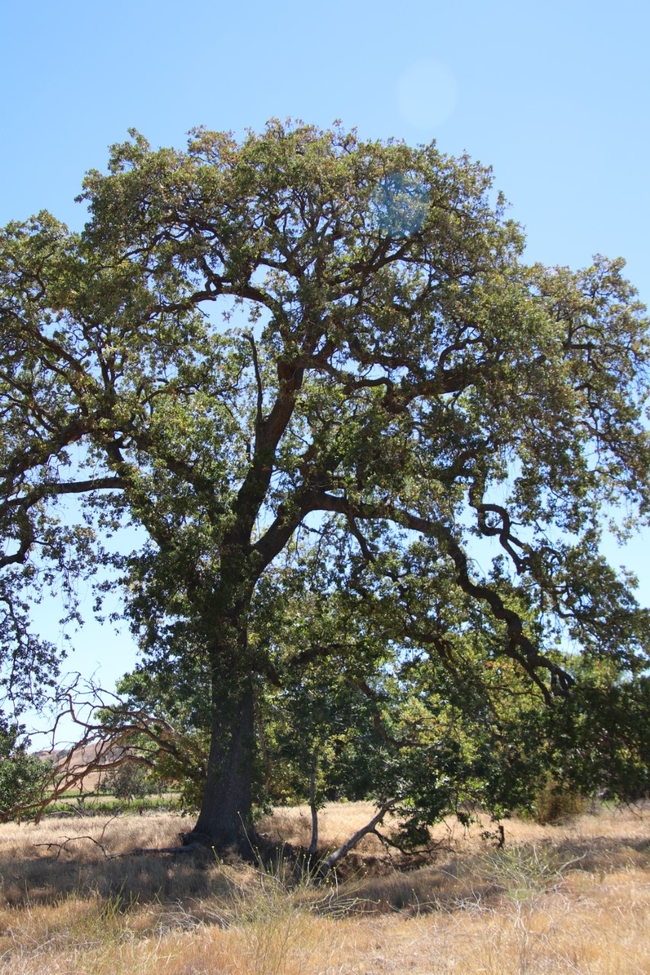
Author: Hyacinthe Loyson
I love to wander among trees, to see and hear the leaves swaying in the breeze, observe birds darting about the branches, squirrels running up and down the trunk, and insects flitting about. I have spent many contented hours sitting under a tree reading a good book. Trees mark the seasons of our lives, blooming in the spring before producing green leaves, producing fruits or nuts in the summer, changing colors in the fall, standing bare and stark during the winter months. I particularly love the Valley Oak tree (Quercus lobata) with its distinctive lobed leaves, the acorns it yields, the fascinating oak galls produced by tiny wasps, and their historical importance to the original people of California as a staple food source.
Arbor Day
Along with 50 countries around the world, the USA celebrates trees on Arbor Day. The day is celebrated during the spring tree planting season. In the USA, the date is typically the last Friday of April, which this year was Friday, April 26. The date varies around the world depending on geography, weather, and if in the Northern or Southern Hemisphere.
But why do we commemorate trees and how did Arbor Day get started?
Benefits of Trees
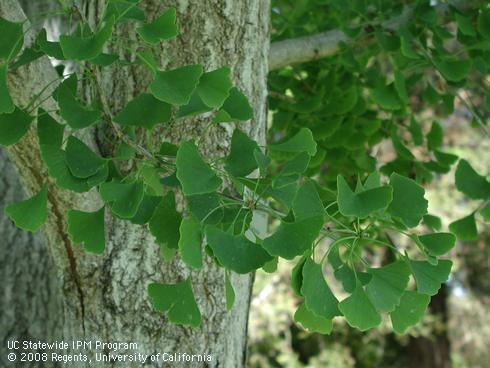
- Trees help combat climate change – Trees absorb carbon dioxide (CO2), which is contributing to global warming. They remove the CO2 from the air and store the carbon. In one year, an acre of trees can absorb the same amount of CO2 produced when the average car is driven 26,000 miles.
- Trees clean the air – Trees absorb odors and pollutant gases such as nitrogen oxides, ammonia, sulfur dioxide and ozone and filter particulates out of the air by trapping them on their leaves and bark.
- Trees provide habitat for wildlife – Sycamores and oaks are among numerous trees that provide homes for many species of birds, mammals, insects, amphibians, and reptiles.
- Trees cool cities – Trees deflect the sunlight, cooling the air up to 10°F by shading our homes, buildings, and roads.
- Trees prevent soil erosion – Trees reduce water runoff by allowing the rainwater to flow down the trunk, onto the earth below. Their roots also slow runoff and hold the soil in place.
- Trees provide wood and paper – Trees help us build our homes and the paper we write on.
- Trees beautify urban spaces – Trees can mask unsightly concrete walls, parking lots, and unsightly views. They help muffle the sounds of the city and create eye-soothing canopies of green. They absorb dust and reduce glare.
- Trees provide personal and spiritual values – During our busy lives, trees can give us a piece of nature and moments of tranquility.
Arbor Day History
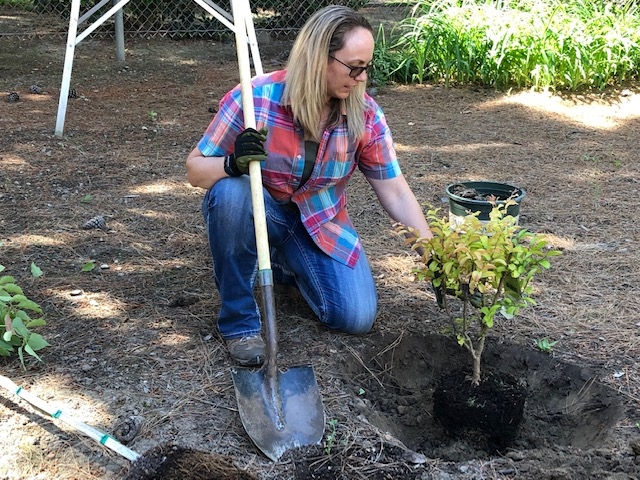
The tradition quickly spread and within 20 years the day was celebrated in every state but Delaware. On April 15, 1907, President Theodore Roosevelt, a conservation supporter, issued an “Arbor Day Proclamation to the School Children of the United States.” In 1970, Arbor Day became nationally recognized due to efforts by President Richard Nixon.
People can celebrate Arbor Day by planting a tree (which can be dedicated to a loved one) and spending time caring for the trees we have. Morton's words resonate strongly today as climate change becomes a serious threat: “Other holidays repose on the past: Arbor Day proposes for the future.”
How Can We Help?
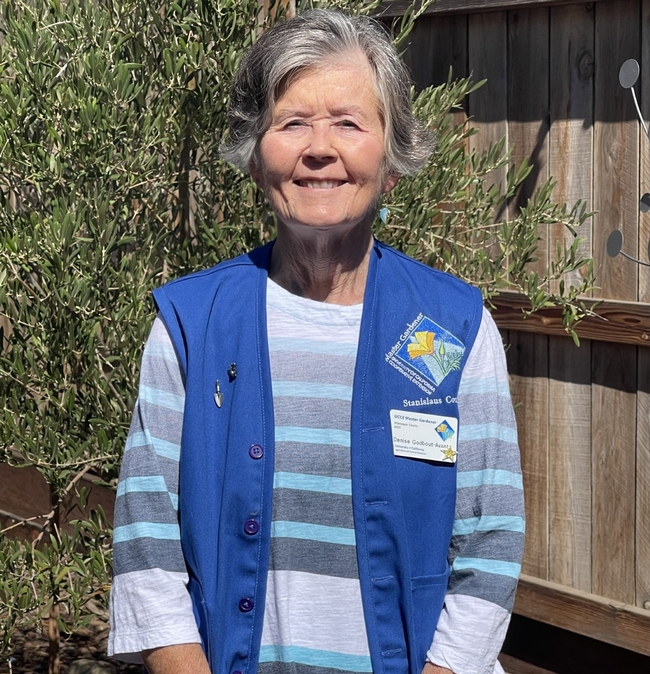
- To reduce the demand for paper, check out books from your local Stanislaus County Library instead of purchasing new ones.
- Help protect existing forests – Encourage reduced cutting down of healthy forests by supporting sustainable reforestation.
- Afforestation – Support the planting of new forest plantations, which can enhance existing forest cover and help reduce global warming with carbon sequestration.
- Continue to water your tree, even during a drought. If you shut off lawn water, don't forget to deep water your tree! You can use a hose or soaker hose to water under the drip line.
- And, of course, plant a tree! You can volunteer for local organizations when they have tree planting days or plant a tree in your garden.
An excellent resource on care and selection of trees is Stanislaus County's Master Gardener “Trees in Your Home Garden,” https://ucanr.edu/sites/CEStanislausCo/files/341553.pdf
Additional resources include on how to plant a tree: https://ucanr.edu/sites/UrbanHort/files/80160.pdf, and on pruning trees: https://ucanr.edu/sites/UrbanHort/files/80116.pdf
Favorite Tree?
Do you have a favorite tree? Write in our comment section what your favorite tree is and why?!
Denise Godbout-Avant has been a UC Cooperative Extension Master Gardener in Stanislaus County since 2020.
This article was originally published on April 25, 2022.
- Author: Martha J. Martin
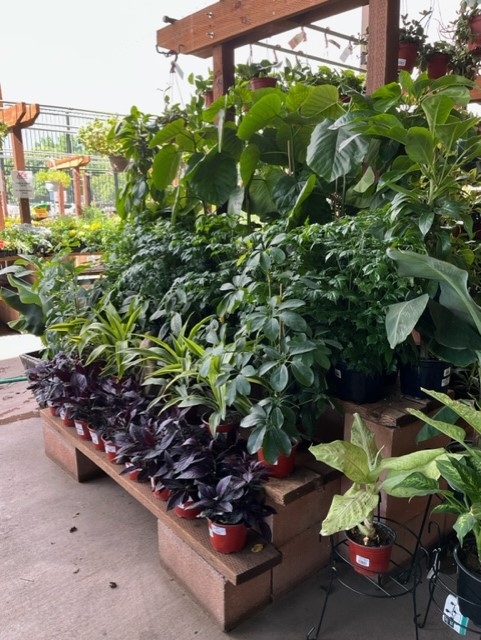
This article explores plants that can cause death and other obnoxious painful symptoms for cats, dog, and rodents. There are hundreds of toxic plants. Hence one must identify which are dangerous before ingestion occurs. Knowing the full scientific botanical name is very helpful because most toxic plants are not identified by label as such. Unfortunately, any plant ingested by your pet can still induce vomiting or upset stomach.
Toxicity depends on several factors including the species of the pet, size, amount ingested, time elapse from ingestion point, pre-existing medical conditions, and plant variables. If you suspect toxic ingestion, immediately call your veterinarian. Bring all plants parts with you including the name, amount ingested, where, and when. The more detailed information forthcoming provides a better chance of recovery for Tommy Tom Cat and Faithful Fido.
Beware of colorful beauties.

Don't bring these plants home.
Dumb Cane or Dieffenbachia is one of the most popular displayed indoor toxic plants growing up to five feet tall. It brings temporary discomfort and oral irritation even for humans. Raise this plant onto a stylish plant stand allowing it to grow in all ranges of light and dry out between watering. Another commonly used house plant is English Ivy that can reach up to six feet indoors. Animals need to ingest large quantities of this trailing vine to cause serious problems. Yet skin rash and fever can occur.
How exquisitely fragrant but cloying is the mortuary stench of lilies from its pistils and stamens, to leaves and bulbs. No matter the type of lily, whether hybrids, Easter lilies, Kaffir (Clivia), Peace lily, all contain insoluble calcium oxalates causing oral irritation and burning of the mouth. Aggressive treatment is needed, and acute irreversible kidney failure can happen. These are toxic to humans and dogs, but cats are especially prone to suffer from these symptoms. Drooling, poor appetite, weakness, tremors, seizures, and coma are the maladies associated with these. Other related examples of these types of plants include glory lily, lily of the valley, calla lily, checkered lily, and crocus. If a cat is not treated by a veterinarian within eighteen hours of ingestion, it could lead to death from kidney failure.
A widely used houseplant is the philodendron. It can be poisonous to humans and pets. Eating it causes a rash of symptoms including burning, swelling of lips, tongue and throat coupled with vomiting and diarrhea. Pothos, a close relative of philodendron, contains calcium oxalates causing like symptoms.
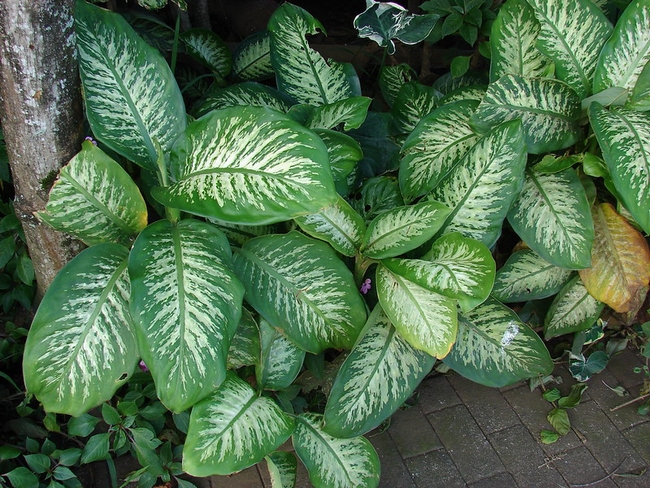
Giving a houseplant as a gift to a pet owner, choose the plant with care.
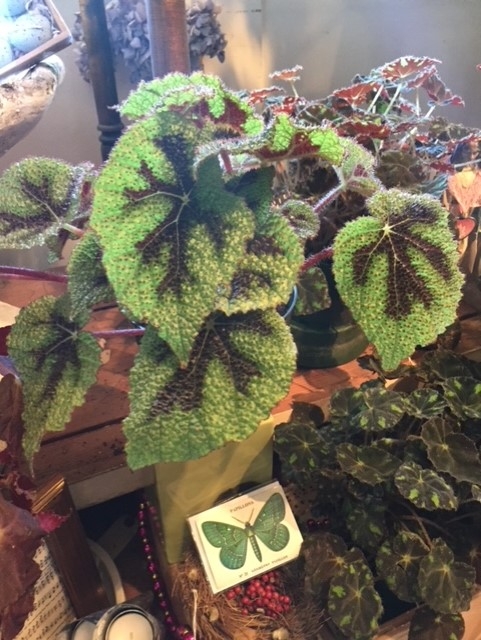
Kalanchoe possess bufodienolides; therefore, vomiting and diarrhea are inopportune side effects if eaten. Although Monstera Deliciosa sounds deliciously succulent, it is an aroid that will irritate pets. Perhaps some good news on house plants given frequently during the holidays is the ubiquitous poinsettia. It is generally overrated in toxicity. Its irritating sap brings discomfort to the mouth and stomach.
Whatever pundit named the Snake plant Mother-in-Law's Tongue shall remain a mystery. It was previously known as a Sanseveria. A name change does not omit the yucky side effects of vomiting, diarrhea, and nausea. Perhaps the notorious Mother-in-Law plant needed a Weeping Fig to comfort her. Many like attributes are rendered by this plant as well. Not to be forgotten is the ZZ plant. It is poisonous even though frequently found in a low light home or office setting. One should wash their hands or wear gloves if you need to handle it.
"Safe" Plant List from the ASPCA

African Violet, Aluminum Plant, Spider Plant, Areca Palm, Norfolk Island Palm, Baby Rubber Plant, Rabbit's Foot Fern, Boston Fern, Staghorn Fern, Burro Tail, Calathea spp., Cast Iron Plant, Echeveria Elegans, Parlor Palm, Ponytail Palm, Boston Fern, Staghorn Fern, Earth Star, Emerald Ripple Peperomia, Hindu Rope plant, Wax Plant, Moth Orchid, Swedish Ivy, Polka Dot Plant and Air plants. This organization cautions that any plant ingested by your furry friends can still cause vomiting or upset stomach.
Resources

Martha Martin has been a UC Cooperative Extension Master Gardener in Stanislaus County since 2020.
Hello, our UC Cooperative Extension Master Gardeners hope to see you this coming Saturday, October 7, 2023 at 9:00 a.m. for a workshop that will help you exchange your traditional landscape for one that invites in pollinators, birds, friends, and neighbors wanting to be a part of it! Please register online or call the office so we know you are coming, as we may not have enough supplies for you if you don't.
Where: Ag Center, Harvest Hall rooms D&E, 3800 Cornucopia Way, Modesto, 95358.
When: Saturday, October 7, 9:00 AM - 12:00 PM
Cost: $10
Questions? (209) 525-6800
Sign Up: https://ucanr.edu/new/front/yard
Instructors: UC Cooperative Extension, Stanislaus County Master Gardeners - Heidi Aufdermaur, Tim Long, Rhonda Allen, Doone Cockrell, and Bobbie Green.


